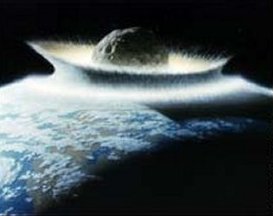Click on image for full size
Courtesy of NASA
Related links:
Scientists Track Asteroids
News story originally written on June 28, 2000
Scientists just created an asteroid map that shows over 900 asteroids that could someday collide with Earth. Any asteroid 1 kilometer long or larger is considered a danger. Even one of these smaller space rocks could change the Earth substantially and possibly wipe out millions of people and animals.
"If a one-kilometer asteroid hit the Earth, it would launch massive amount of dirt and debris in the atmosphere. The smaller pieces take some time to rain out," one scientist said. "During that time, all that material is blocking the sun from heating the planet. So it gets cooler on the planet and agriculture worldwide is disrupted."
Scientists suspect a large asteroid may have crashed into the Earth millions of years ago, wiping out the dinosaurs. Fortunately, 40% of these asteroids are now known, and the computer model used to track these should help scientists discover more. Most of these asteroids are in the belt between Mars and Jupiter. The problem arrives when two or more of these rocks crash into each other, sending one or more off orbit and maybe towards Earth.
As of right now, we can only predict up to 100 years into the future. So unfortunately,
we can't look for possible incidents way into the future. Even still, scientists say this is a great start to
protecting our planet from another catastrophe.















